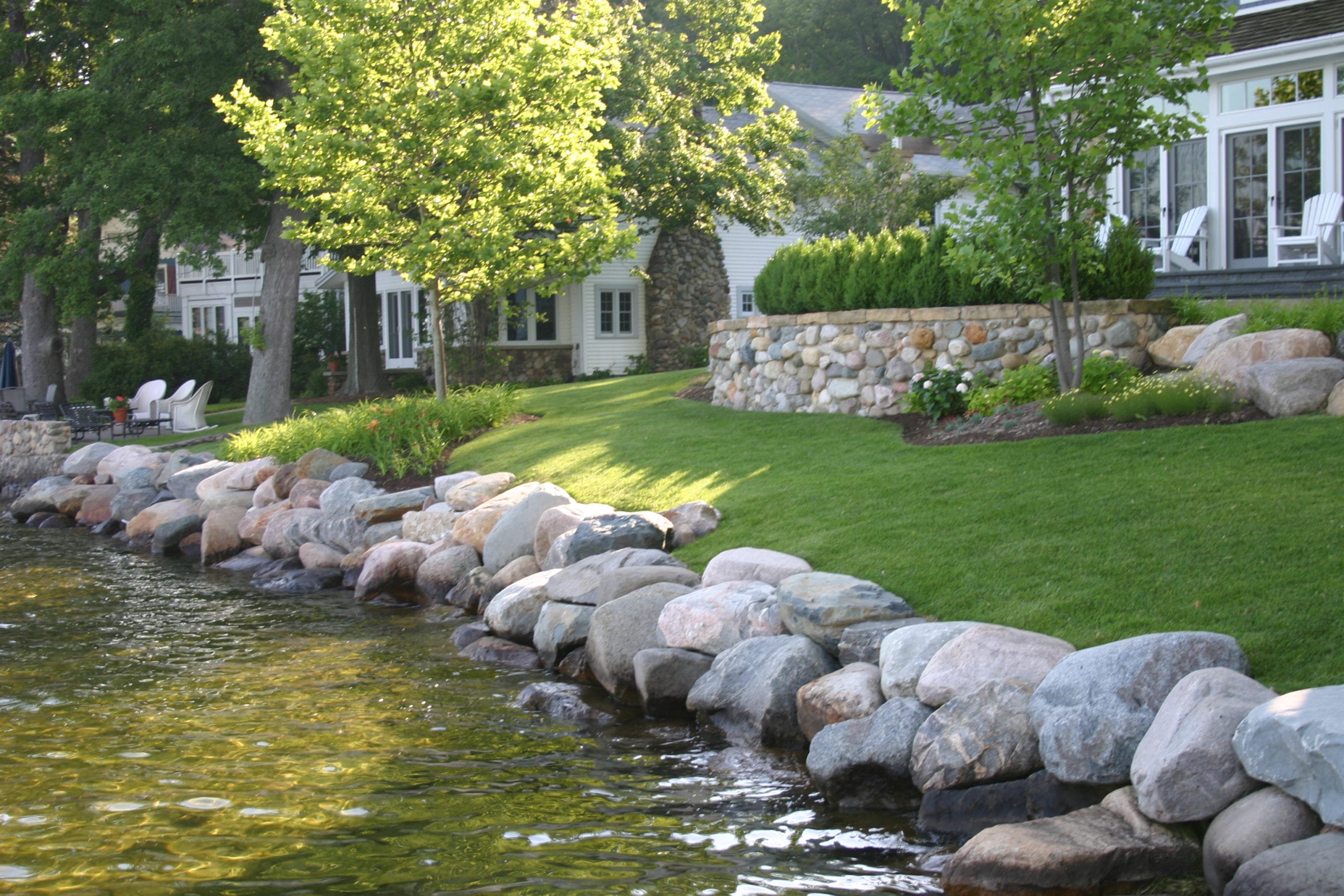“What you do makes a difference, and you have to decide what kind of difference you want to make.”
-Jane Goodall
Preserve
Restore
Natural Shorelines
Most people who live on the lake want to see the water, want low maintenance landscaping and easy access to the water. This usually involves solid seawalls and turf grass. However, a natural shoreline is a complex ecosystem that sustains fish and wildlife and protects the entire lake. Native vegetation along the shore acts as a buffer zone, intercepting nutrients and reducing runoff, erosion, and sedimentation. Aquatic plants provide food and shelter for ducks, songbirds, an other animals while reducing problems caused by Canada geese and burrowing muskrats. Native plants create habitats that support our native fish, wildlife, birds and the organisms on which they depend. The use of native wetland and upland plants will allow you to create a natural environment that benefits both you and your lake.
Midwest Glacial Lakes Partnership ~ Shoreline Living Brochure
Protect the Watershed
A watershed is an area of land that drains all the streams and rainfall to a common outlet. We are part of the Tippecanoe Watershed, and our water drains to Lake Maxinkuckee. Typically, the problems and solutions to pollution in the lake begins on the land. Runoff carries pollutants, like sediment, nutrients, bacteria and pesticides, into the nearest waterway, which eventually end up in the lake.
Excess pollutants cause algae blooms, invasive weeds, muddy water, bacteria and declining fish populations. Toxic blue-green algae, which is technically bacteria not algae, and e. coli are of particular concern.
- Blue-green algal blooms occur when the right formula of light, water temperature,
water flow, pH and nutrient pollution combine. There is no treatment once a blue-
green algal bloom is formed. - E. coli gets into the waterways from failing septic systems, wildlife and agricultural
runoff.
The only recourse is to stay out of the water until conditions improve.
Therefore, it is important to stop pollutants from entering the lake in the first place.
“No one can do everything but everyone can do something.”
– Max Lucado
Volunteer
We have many volunteer opportunities for you to get involved with Lake Maxinkuckee Environmental Council.
Boat Captain – Time Commitment: Minimal
There are times that the LMEC needs a pontoon boat and driver. This would be on an as needed basis, depending on your availability.
Weed Watcher – Time Commitment: Minimal
The more eyes we have on the water looking out for invasive aquatic plants the better our chances of spotting any small problems before they become big problems. This would involve minimal training and then just being on the lookout when you are out on the water. If you spot something suspicious, take a picture and send to the LMEC office.
Shoreline Showcase – Time Commitment: Minimal
If you have a property that incorporates native vegetation or a natural shoreline, we want to show it off and promote it. Be willing to mentor other lake property owners.
Water Monitor – Time Commitment: 45 minutes 4x per year maximum
We currently have ONE volunteer who conducts our water tests and submits to the Clean Lakes Program. It would be helpful to have a few more people trained. You need to be able to get out on the water to pull samples, so if you don’t have a boat, we would pull in a Boat Captain.
Deck Hand – Time Commitment: Minimal
Preparing fund raising mailings, create fliers, marketing, write blog articles, social media posts, create content for the newsletter, or whatever you like to do.
Outreach – Time Commitment: Varies Per Event
Set up and/or tear down event booths, speak at various events, help with Wetland Tours and/or youth education programs.
Get In Touch
Call
574-842-3686
Address
PO Box 187
116 N Main St
Culver, IN 46511
Hours
Mon - Fri: 9am - 4pm
* The office is occasionally closed during these hours due to outreach events and work outside the office

